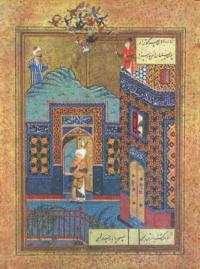You are here
From Qarakhanids to Chagatais

Monuments and places of interest of Samarkand.
“Does progress mean that we dissolve our ancient myths? If we forget our legends, I fear that we shall close an important door to the imagination”
James Christensen.
The The Silk Road Uzbekistan - Silk Road Adventures.
At the turn of the Xth – XIth centuries, the Samanid state was smashed by armies of Turkic dynasties - Qarakhanids and Ghaznavids. The Amu Darya became a border between the new states.
The Qarakhanids gained Maverannahr. In the mid-XIth century, western Qarakhanids established an independent state. For two centuries, Samarkand had been the capital of their state.
It was a period of intensive development of the feudal city. Shahristan on Afrasiab and the southern rabad were newly walled around. The population had grown up to 100 thousand. A new palace was built in the citadel.
The cathedral mosque was restored. Streets in shahristan were improved. The tomb of Kusam ibn Abbas had obtained cultic significance and was supplied with a mausoleum. Beside, the mosque and madrasah of Tomgach-Bogra-khan from the Qarakhanids were built.
This one-storey building of yard-aivan type is the earliest among Central Asian madrasah. At the first half of the XIIth century, shaikh Ahmad al-Hamadani, founding Sufi traditions of "khadjagan-naqshbandiyyah" and "yassaviyyah" was preaching in Samarkand.
At the beginning of the XIIIth century, the last Qarakhanid ruler, Usman constructed the mausoleum for his father, Abraham ibn Husein on Afrasiab. At the last quarter of the XIth century, the Qarakhanids had to recognize dependence on another Turkic dynasty - Great Seljuks, which conquered the western lands of the Islamic world.
In 1141, the Qarakhitai smashed the army of Seljuk sultan Sandjar and his vassal, Qarakhanid Mahmud-khan in the battle near Samarkand. Tens of thousands warriors, which lost in this battle, were buried at Samarkand holy cemetery of Choqardiza.
The Qarakhanids managed to keep their authority in Samarkand, however, recognized their vassalage on the Qarakhitai. At the beginning of the XIIIth century, political supremacy in Central Asia switched to Khorezmshahs, which subordinated the last Qarakhanids and took Samarkand.
In the citadel, on a place of the Qarakhanid palace, Khorezmshah Muhammad built a new palace decorated with wall paintings. Invasion of Mongols led by Chinggis-khan became terrible ordeal for Central Asia. Having taken Bukhara, in 1220 the armies of Chinggis-khan arrived at fortified Samarkand.
The city was defended by 150-thousand garrison and 20 charger elephants. Chinggis-khan simulated an assault and flushed defenders from the city, where the main body of Mongols smashed them. The Mongols army laid a siege, shelling the city from bows and catapults. Then, the Islamic clergy sent an embassy to Chinggis-khan and, having stipulated for security of their people, opened gates before Mongols.
The most part of citizens were taken prisoners, craftsmen were moved to Mongolia. Taoist monk Chang-Chun witnessed that at the end of 1221, just a quarter of the population had remained in Samarkand.
However, the city had not been ruined totally yet. Bazaars were operating, and the Mongolian governor lived at the palace of Khorezmshah. Chinggis-khan conquest brought Central Asia to the domain (ulus) of his son - Chagatai.
Like the other cities of Maverannahr, Samarkand was strongly damaged because of internecine feuds among the Chinggisids at second half of the XIIIth century. Afrasiab had been entirely deserted.
Revival of Samarkand fell to the end of the XIIIth - beginning of the XIVth centuries, when was established Chagatai ulus, but the urban life switched to the place of former southern rabad (suburb).
Authority:
Alexey Arapov. Samarkand. Masterpieces of Central Asia. Tashkent, Sanat. 2004.







